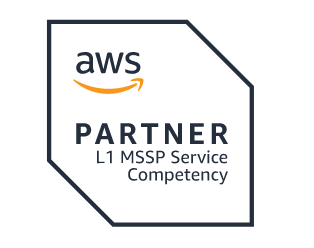Digital Transformation and the Changing Landscape of Healthcare
Originally published December 4, 2019 by Scott Whyte, Advisor & Former Chief Strategy Officer at ClearDATA, at Toolbox Tech.
A closer look at how the healthcare industry’s digital transformation impacts every stage of healthcare from the initial consultation to post op treatment – not only for patients but providers as well.
As a healthcare IT veteran, I’ve seen a lot of change in our industry but nothing quite as exciting as where we are right now in regard to true digital transformation possibilities for healthcare. Digital transformation uses information technology to improve how organizations deliver value to their customers. These changes include culture and business processes, and in the case of healthcare, the focus is on better patient and provider experiences and outcomes. This includes touching health and wellness content and engagement, and care access and delivery.
Digital transformation holds the promise to bring positive change at each stage of the journey, transforming the lifecycle of care for patients.
Here are some examples:
Initial impetus to decide if care is needed: Many innovative solutions like ‘Talk to a Nurse’ and similar programs are available for a patient to begin research into their area of concern and gain a deeper knowledge. Most of these are via cloud enabled apps and portals, often even available from mobile devices.
Initial consultation: Instead of proceeding directly to a provider’s office, completing pages of forms and experiencing long wait times, the patient experiencing healthcare’s digital transformation is likely to have the initial consultation from the comfort and privacy of home thanks to telemedicine and videoconferencing tools.
The office or ER visit: The patient can open a mobile app and engage with their care provider, their insurance provider, google maps and more to find a highly recommended physician within their network who is close to where they live or work and is taking new patients. Apps may display the open available times for the physician of their choosing and an appointment could be made – all from a phone. Information about preparation for the visit can be conveniently pushed right to the patient’s device ensuring everyone is better prepared, has done the necessary lab work or fasting, and is ready to receive the consultation or services requested.
During the visit, paperwork turns into electronic health records that are easier and faster to update and give the provider a holistic view of the patient. Natural language processing and machine learning can search patient records to quickly surface related diagnoses, visits and lab results in their history, as well as their current and prior medications.
In the case of diagnosis, artificial intelligence applied to imaging is showing evidence of providing a more accurate, and earlier detection for diseases including breast cancer than what a human can provide on their own. In addition, doctors can use ML and AI to glean insights from big data and population health records to hone their diagnosis and care delivery plans based on similar issues with similar populations and demographics.
Aftercare and Post Op: So often hospital readmissions can be traced back to patients and or their caregivers not understanding what to do after they leave the physician’s side. Digitally transformed healthcare provides the patient or their caregiver with text and smart-watch enabled medication reminders, monitoring, answering questions and more to help the patient stay on a successful recovery plan. Additionally, interactive apps with friendly UX can engage the patient in embarking on healthier diet and exercise, monitoring their health before a situation escalates and in general work toward deeper and broader wellness. In the end, getting well can become a streamlined process that is easier emotionally, physically and financially on the patient.
End Results: The provider and the payer are likely to see cost savings as more patients show up on time, prepared for their appointments, going to the right source for the right treatment. Providers are able to squeeze out some of the $750 billion in health system waste while providing better care delivery that can lead to improved value-based care reimbursements. With effective digital transformation efforts, everybody wins. It’s a far cry from feeling pain, having no idea what is wrong, driving to a doctor’s office or ER and waiting hours to have a provider ask “What’s wrong with you today?” and then spending hours trying to resolve payment and coverage questions resulting from the visit.
Why is Healthcare Willing to Change After Years of Resistance?
Healthcare is a complex, risk averse industry and while banking and retail ran toward digital transformation a decade ago, healthcare watched from afar. As someone who consults on change management with healthcare organizations large and small, I can tell you with certainty – change is most often a direct result of a compelling driver or drivers. Change doesn’t happen in passive pastures.
In healthcare we have two primary drivers forcing this change of digital transformation: consumer/patient demand and the push for value.
Consumer and Patient Demand
We are living a new normal we likely could not have predicted ten years ago. Today, everything we want or need is available to us from our mobile devices. From in home assistants, to self-driving cars, we’ve moved from Amazon Prime convenience for shopping into an integrated landscape of quick and easily accessible digital choices – it’s a click from here to there. The notion of sitting in traffic to waiting in long lines for anything seems ridiculous in hindsight.
Because consumers are experiencing this new digital landscape daily at work and play, they are demanding their healthcare payers and providers to catch up to expectations and meet them where they are in their busy lives. Make no mistake, healthcare is an increasingly competitive industry and the care delivery organizations, payers, life sciences and device makers who can do this and make it easy for their providers and patients will be the only ones who survive and thrive this digital health transformation.
Value-Based Care
While consumers are pulling for better digital experiences, employers, Medicare and Medicaid are pushing healthcare to prove better value and improved outcomes. Those that can get better insights from their data and prove their value are simply going to make more money. Employer groups and individuals are shopping as never before and looking for payers offering the best price for the best benefits packages. This is causing payers and providers to question the way they used to operate. They are looking at legacy systems and exploring ways to exchange huge capital investments (CapEx) into OpEx – making much smaller investments to migrate workloads to the cloud where they can enjoy better security, compliance and scalability as well as better interoperability so the mountains of data healthcare is sitting on can be put to good use. They are looking at AI and machine learning tools that not only make it easier for physicians to document and code but also to get better insights into the patients they are serving so they can improve healthcare outcomes.
These insights coupled with user friendly digital interfaces also bear the enormous benefit of allowing us to get in front of escalating chronic disease and in many cases address problems before they become huge problems physically and financially to all involved. The great news is the most advanced digital engagement tools are available via the cloud (machine learning, AI, natural language processing and more) and they don’t have to make huge capital investments in them as they transition from legacy to more modern systems.
The healthcare providers and payers that get on board the digital transformation train are already attracting new patients and members, realizing cost savings and delivering innovations, including improving patient outcomes. They find themselves more nimble and better able to pivot to meet market demand as well as budget and business objectives.


